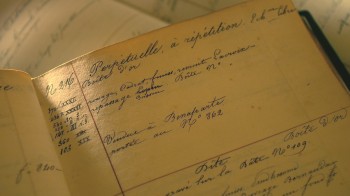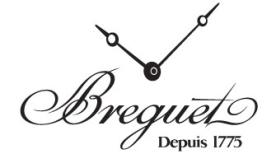We don’t know everything about Abraham-Louis Breguet, but we do know quite a lot. A descendant of the great watchmaker, historian Emmanuel Breguet, currently vice-president for heritage and marketing at the eponymous manufacture, has comprehensively researched the life of his ancestor.
Fishing for history
The most salient facts – those that concern his watches – have been known for quite some time. Shock protection, tourbillons, finishes and subscription watches – all these have been documented. Nevertheless, some details of the great watchmaker’s personal life have hitherto remained outside the scope of the history books. Some are major events, others are small anecdotes – such as the fact that the surname “Breguet” comes from the old French word “brègue” or “breguin”, which can mean either a fishing net, or a fish found in Lake Neuchâtel, the region where Abraham-Louis was born in 1747.
When Breguet met Berthoud
Abraham-Louis was not born into a watchmaking family – his father died when he was just 11 years old. But his mother remarried a man called Jacques Tattet, a watchmaker, and Abraham-Louis’ course was set.
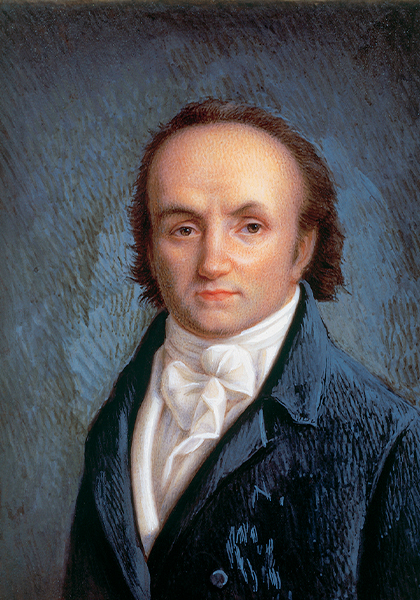
The young man’s stepfather sent him to Paris to study watchmaking, and there he met two figures who would play a crucial role in his life: Ferdinand Berthoud and Jean-Antoine Lépine. Breguet would later work for Berthoud, who was 20 years his senior. Another interesting nugget: Breguet, Berthoud and Lépine all worked within a stone’s throw of each other, on the Ile de la Cité in Paris!
Invention of the perpetual watch
Today, it remains impossible to state with any certainty which watchmaker invented the self-winding watch – known originally as the “perpetual watch”. Louis Perrelet seems to have come up with the principle of the rotor, but Breguet used another kind of moving weight, known as the “masse à secousses”, to power two barrels that supplied a “power reserve” (the term had never been used before) of 60 hours. Breguet worked with two barrels for a long time, even using four towards the end of his career.
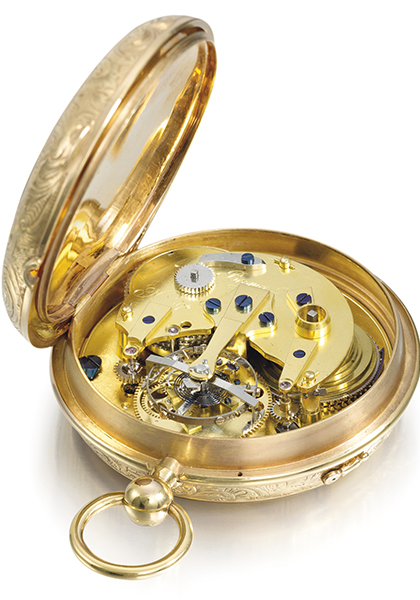
The concept of the oscillating weight eventually won the day, but Breguet had other inventions up his sleeve. For his repeating watches, a particular speciality of Breguet, he replaced the traditional gong that lay across the rear plate with curved gongs wound around the movement. These are still in use today.
Leader of men
The myth of the solitary watchmaker is not one that applies to Abraham-Louis Breguet. In 1786 he came up with the concept of division of labour, according to which a number of specialised craftsmen would collaborate on producing “ordinary watches, simple but perfect” (ca. 1786). It’s ironic that the man who laid the foundations of mass production never made the same watch twice!
Inventor of the wristwatch?
Breguet the inventor, innovator and pioneer left his mark on many mechanical arts. He developed a precursor to the metronome, which he called a “musical chronometer”, and drafted an “Essai sur la force animale” or Essay on Animal Strength, in 1811!
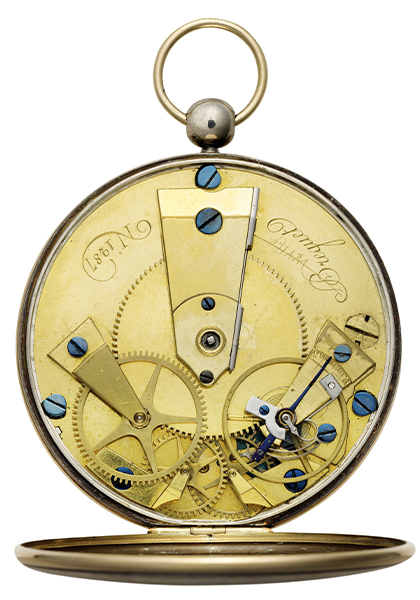
It is nevertheless amusing to note that one of his most notable inventions – the wristwatch – was largely ignored in his own time. We know without a doubt that Abraham-Louis Breguet designed the world’s first known wristwatch for order number 2639, placed by the Queen of Naples (Napoleon’s sister) on 8 June 1810. It took two and a half years to make.
Problems of the past... and the present
The pocket watches of yesteryear were subject to the same problems as today’s wristwatches, and Breguet threw himself into tackling them. One issue was lubrication: Breguet noted the unsuitability of vegetable oils and quickly opted for a natural escapement that would require no lubrication.
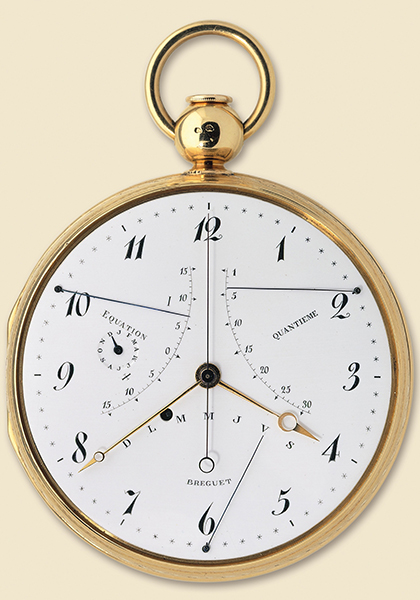
The same goes for the pare-chute or anti-shock device. Breguet mounted a tiny dish on a strip-spring to keep the pivots in place in the event of a shock. This was the precursor to the modern Incabloc. And then there’s the “sympathique” clock of 1797 that could be synchronised with a pocket watch. It was a feat of technical ingenuity, although its applications were limited.
A life punctuated by tragedy
Despite his many professional successes, Breguet’s personal life was marked by tragedy. Two of his three children perished in infancy, and his wife died at the age of just 28. He never remarried.
Breguet became involved with the French Revolution and, in 1789, was forced to flee his workshop. It was not until years later that he was able to return. With the Revolution and the Terreur that followed, his business fell apart. Breguet chose to spend his exile in Switzerland, where he was able to continue his work.
Flakes and fakes
Although well-known in England, the watchmaker suffered from his English clients’ reluctance to pay, which on more than one occasion placed him in financial difficulty. Breguet was able to save his business by adopting the subscription model, whereby a deposit of one-third or one-quarter of the total would be paid when an order was placed. He also protected his work against the possibility of counterfeiting by applying a secret signature to the dial, using a procedure developed for minting coins. This secret signature is still in use today.
